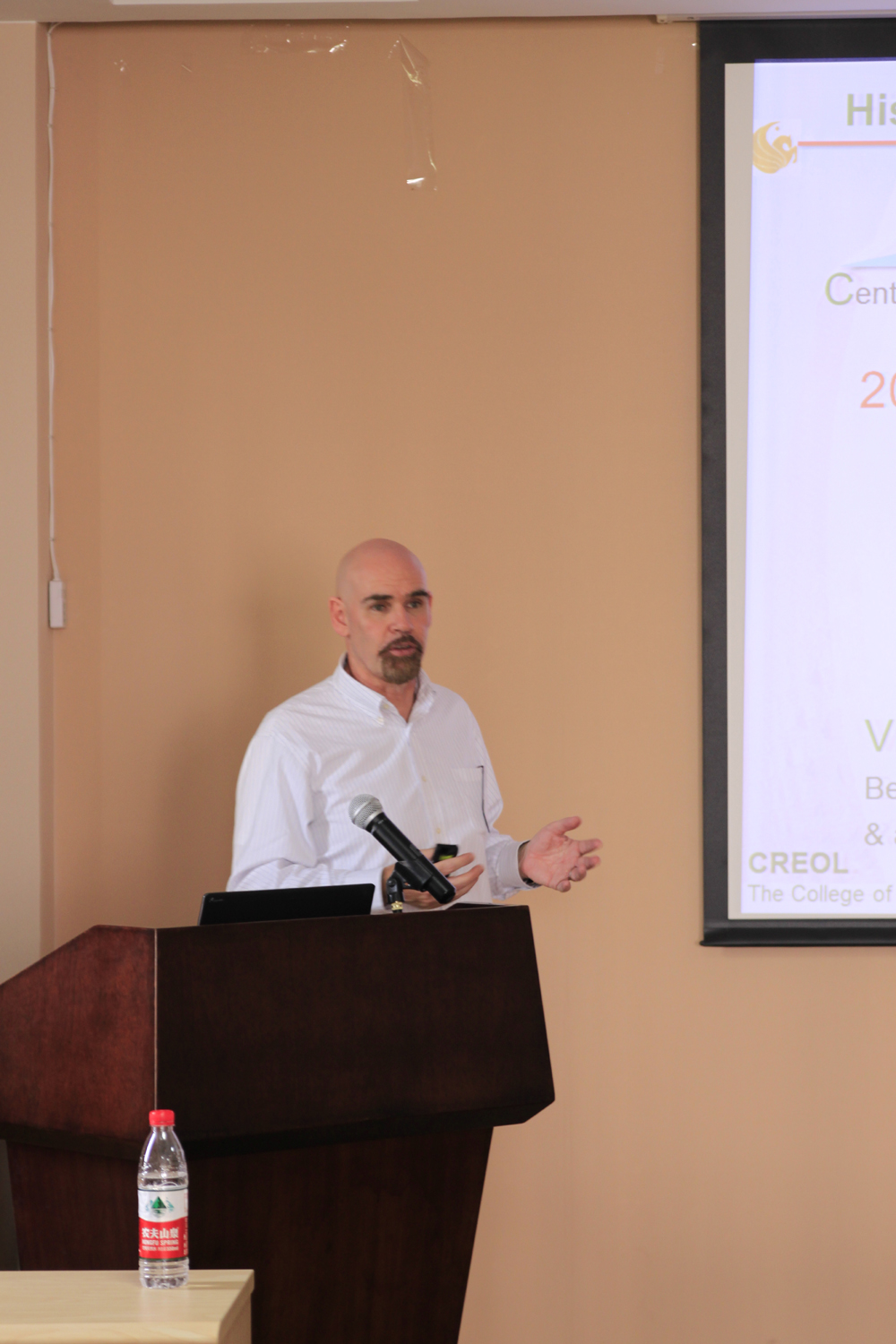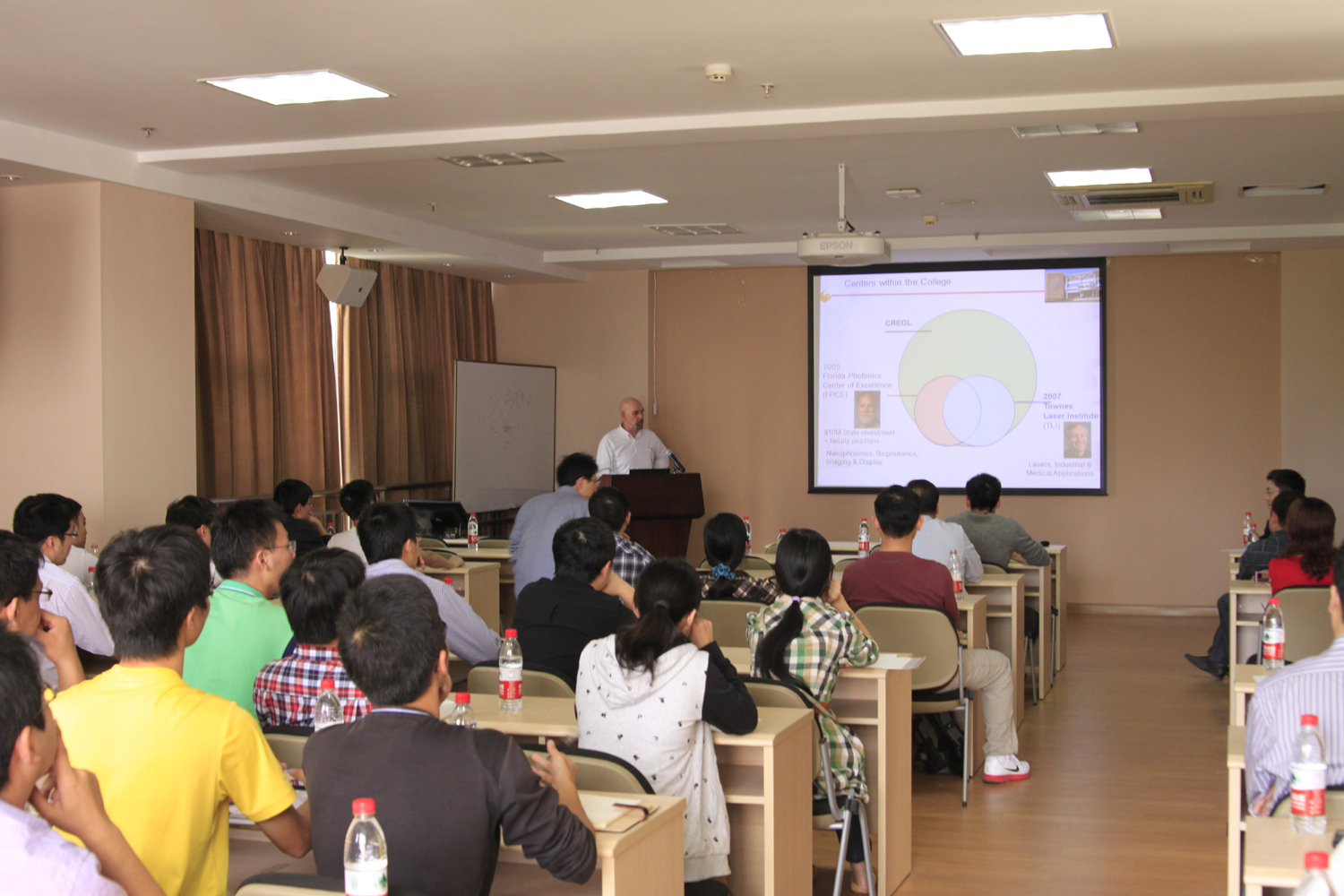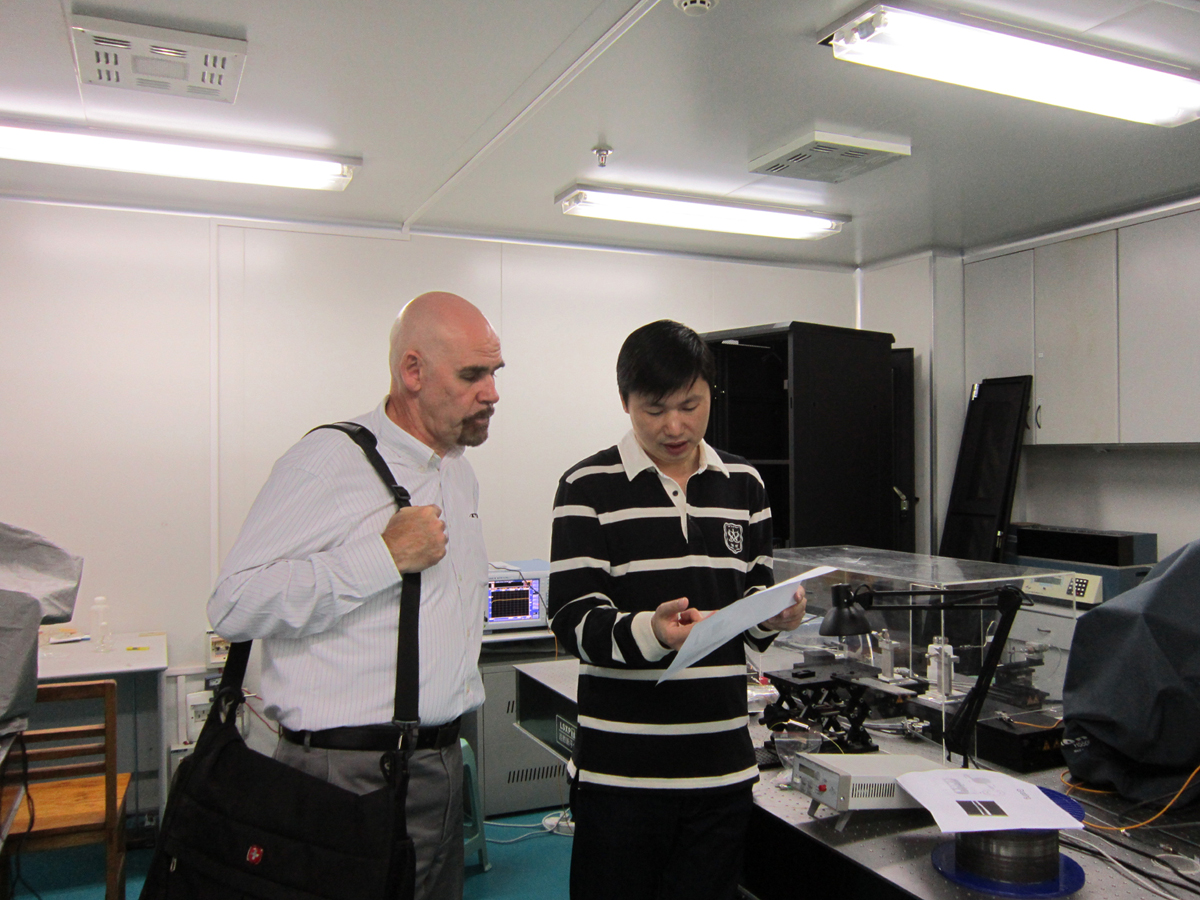今天上午来自中心弗罗里达大学的Prof. David J. Hagan在实验室陆延青教授的陪同下参观了南京固体微结构物理国家实验室及南京大学科技馆,
与实验室的各位老师进行了深入的交流。下午2:00,Prof. Hahan在唐仲英楼B501室为微结构国家实验室的老师和学生们作了一场精彩的报告。
下面是报告摘要及Prof. Hagan的简介。
Title: Using nonlinear optics to detect IR with wide-gap semiconductors
Prof. David J. Hagan
CREOL, The College of Optics and Photonics
University of Central Florida, Orlando, FL USA
Abstract:
Two-photon absorption (2PA) in semiconductors has long been known to scale as
the inverse third power of the energy gap, i.e. E_g^(-3), which limits the 2PA
coefficients available in large gap semiconductors. However it is also known
that in the highly nondegenerate case, where the input wavelengths are very
different, the 2PA rate can be greatly enhanced over the degenerate case. We
have recently verified this for several direct gap semiconductors in pump-
probe transmission experiments with femtosecond and picosecond pulses, where
we showed that, in many direct-gap semiconductors, nondegenerate 2PA
coefficients are enhanced approximately 100-fold over the degenerate case. In
GaAs, we observed 2PA coefficients around 1,000 cm/GW. Coefficients this
large were previously only observed in narrow-gap semiconductors such as InSb.
Based on this effect, one may obtain sensitive gated detection using
conventional semiconductor photodiodes. We have demonstrated this with
standard GaN and GaAs photodiodes using extreme non-degenerate photon pairs
with up to 14:1 energy ratio. We can also detect weak IR radiation by
employing intense UV gating pulses. The minimum detected IR pulse energy in Ga
N is as low as 20 pJ energy while for a standard cooled MCT detector, the
minimum detectable energy is 200 pJ. We have also now demonstrated cw
detection using this method. It is worth noting that this process does not
use IR crystals or phase-matching, as employed by ?(2) upconversion detection
. In this talk, will show how this detection scales to other semiconductors
and how one may optimize device geometries for practical detection.
Biography:
David Hagan received his PhD degree in Physics at Heriot-Watt University,
Edinburgh, Scotland in 1985. From 1985 -87 he was a research scientist at the
Center for Applied Quantum Electronics and the University of North Texas. He
moved to UCF in 1987 as a founding member of the CREOL faculty, where he is
currently Professor of Optics and Physics and also serves as Associate Dean
for Academic Programs. He is currently Editor in Chief of the OSA journal,
Optical Materials Express and a Fellow of OSA. His current research interests
include nonlinear optical materials, especially semiconductors and organics,
and techniques for nonlinear optical characterization and spectroscopy.



